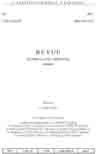Metaforičko-alegorijski jezik Fevzijinog Bulbulistana
Metaphoric- allegoric language of Fevzi’s Bulbulistan
Author(s): Đenita HaverićSubject(s): Language and Literature Studies
Published by: Orijentalni Institut u Sarajevu
Keywords: linguostylistics; Persian language; metaphor; allegory; Bulbulistan; Fevzi Mostarac
Summary/Abstract: In order to correctly interpret hidden thoughts and messages of Bulbulistan, which are expressed in metaphoric-allegoric and symbolic language, it is necessary to explain and analyse the main metaphors and allegories in Bulbulistan. Namely, for grasping the true meaning of the text, it is a recipient’s duty to establish which word with a neutral meaning is replaced by a metaphoric one, and that asks for a great effort, especially when we have in mind the fact that Bulbulistan is a work belonging to tasawwuf literature. This study uses a model for classification of metaphor which was introduced by Levin in his analysis of the Russian metaphor. According to that interpretation, there are three main types of metaphors: metaphors-comparisons, always in form of two-part syntagm, with the second part always in genitive case, presenting an object that is being compared, while the first word in the nominative presents what the second part is being compared with; metaphors-riddles, deciphering of which is the most challenging, but also most stylogenic, and metaphors which are ascribing to an object properties of another object. It can be concluded that metaphor expressed in the form of metaphoric genitive, that is the genitive metaphor, is the most used metaphor in Bulbulistan.
Journal: Prilozi za orijentalnu filologiju
- Issue Year: 2012
- Issue No: 61
- Page Range: 77-97
- Page Count: 21
- Language: Bosnian

